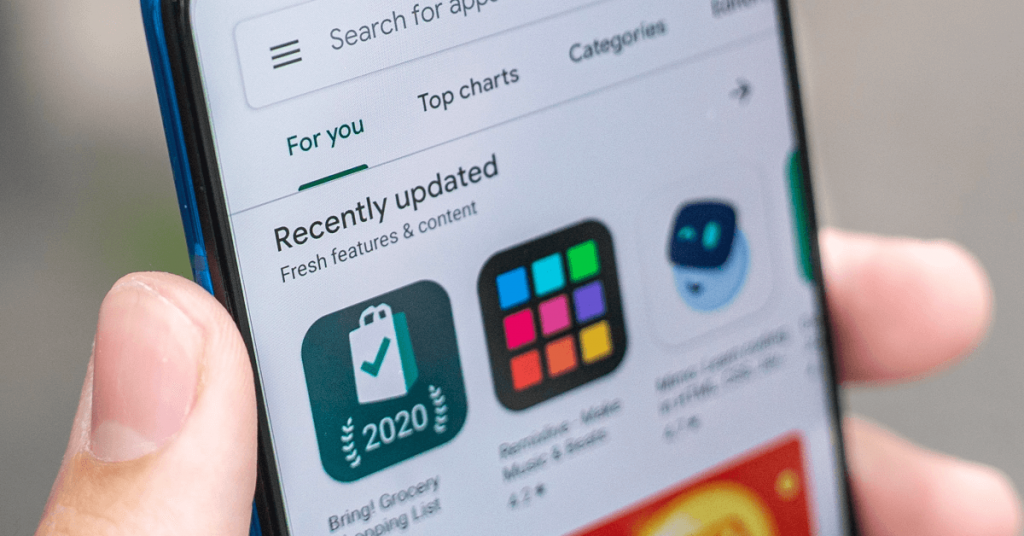Once the app is released, all that remains is distribution in mobile stores. It may seem like a challenge for the first time. Android, as an open platform, has various options for app distribution. But every day, thousands of apps are published in mobile stores. Nobody can deny the Google Play Store’s popularity and domination in mobile applications. This article focuses solely on Android apps and dives deeper into Google Play’s requirements. You will be led through the entire process with this step-by-step guide.
Preparing your app release
Before the real process of app submission can begin, and your app will be available to install, a few things must be completed. It goes without saying how vital testing your application is. You should test your app as often as possible and be 100 percent sure it’ll work admirably. Unit tests are a must for an application as it tests its logic. Moreover, nice to have instrumentation tests before uploading the app.
New apps must meet the desired API level criteria. The target SDK version is a number that indicates the most recent Android version for which an app is built. The size of the app is also quite important. Users are less likely to download an app that takes up too much storage space on their smartphone. Furthermore, Google limits the program size to 100MB. When your app surpasses this limit, it’s possible to use the Android APK Expansion file, which divides the app into parts.
You should be aware that to get your app published on Google Play, you must pay a price of USD 25, which is Google’s registration fee. This is a one-time charge. It permits you to create a developer account and publish as many applications as possible as you maintain quality.
Moving on to publishing an Android app on the Google Play Store, you should know that checking and reviewing can take up to 7 days and, in certain circumstances, much longer. The predicted time will be displayed on the Google Play Developer Console.

Step-by-Step guide on publishing an app on Google Play
With this comprehensive guide, there are 8 steps that you need to take to release a mobile application on Google Play:
- Create a Developer Account
- Link with Google Wallet Merchant Account
- Create an App
- Prepare App Store Listing
- Content Rating
- Price and Distribution
- Upload APK file
- Publish your app
It may seem complicated, but this process isn’t complex. Let’s dive into the first one.
Step 1: Create a Developer Account
To publish an app on Google Play, you first need to create a developer account. As mentioned earlier, it requires a one-time fee of USD 25. The process itself is pretty simple. All you need to do is to fill out all the credentials like your name, e-mail, country, and the like. To get approved, it may take up to 48 hours.
Step 2: Link with Google Wallet Merchant Account
Let’s say you want the uploaded apps to support in-app purchases or make them paid. For this, you require a payments center profile – the merchant account. Sign in to your Google Play Console account and click on ‘Reports’ followed by the ‘Financial Reports’ option. Once you finish creating the Merchant profile, the developer account gets automatically linked to it.
Step 3: Create an App
Now is the time to finally create an app in Developer Console. Once you are logged into your account, there are instructions on how to do that:
- Navigate to the ‘All applications’ tab,
- Select ‘Create Application’,
- Choose the app’s default language,
- Type in an application name,
- Create an app!
After this, you will be taken to the store entry page to add the data about the app.

Step 4: Prepare App Store Listing
It contains the most essential information for so-called app store optimization. These details will show up to customers on your app’s listing on Google Play. It may require extra resources and effort, so it’s good to prepare this earlier.
Product Description
For product details, you need to fill out 3 fields:
- Title – an app’s name (max 50 characters),
- Short description – a brief description that users first see (max 80 characters),
- Full description – complete information about the app (max 4000 characters).
Graphic Assets
There are all images, videos, and icons that you want to include to promote the app. You may add from 2 to 8 screenshots from 320px to 3840 px. The requirements for the icon are 512px by 512px.
Tags
Choose from the list the most relevant to your app keywords for better ASO.
Localization
In the Google Play Store listing details, provide translations of your app’s information, in-language screenshots, and other localized assets.
Categories
There are various categories for each type of app available on the Play Store. Pick the one your app fits into best.
Contact Details
Provide the support service contacts by filling in the website URL, email, and phone.
Privacy Policy
Apps that request access to sensitive user data need to enter a comprehensive privacy policy that effectively discloses whether your app collects, uses, and shares that data.
ASO
If you want to dive more into ASO techniques and learn some tips, read Applover’s blog post about the App Store Optimization tips.

Step 5: Content Rating
The next step regarding how to publish apps on the Play Store is to rate your app. Pass a rating quiz to avoid being labeled as an Unrated App (which may result in app removal). This option is easily accessible via the left-side navigation.
Fill out the questionnaire to rate your app. After that, select the ‘Save Questionnaire’ option and the ‘Calculate Rating’ option to check your app rating on the Play Store. You will receive ratings from authorities like PEGI, ESRB, or USK.
Step 6: Price and Distribution
This is where your monetization strategy comes into play. To do all this, go to the Pricing and Distribution tab in the menu and then make choices. Remember that you can change your paid app to a free one later, but you cannot do it in another way. You may also choose which countries you want your software to be distributed in and if you want it to be distributed to specific Android devices and programs.
Step 7: Upload the APK file
After you’ve completed all of the previous steps, the next step is to upload an app for review. Go to ‘Release management’, and then ‘App releases’.
Here, you must choose the release to which you wish to publish your initial app version. You can do an internal test, a closed test, an open test, or a production release.
Once you’ve picked an option, select ‘Create release’. Upload an APK or app bundle. The release name will be added automatically.
Step 8: Publish your app
You’re almost done! Evaluate and distribute your release. Go and double-check the selected options. Make sure everything’s as you want it. When ready, go to the App Releases section on the left panel. Click on ‘Review’ to confirm the changes and send your app by pressing “Start rollout to production”.
Contact
Do you want to talk more about creating your app for Android devices?
Getting your Android app into the world
Soon your app will be installable for many mobile users. Following successfully completing the procedures for uploading an app to the Google Play Store, it is now time to have it listed on Play Store. Promoting the app and doing press releases are irreversible parts of successful mobile app marketing. But if you want to read more about the optimization of Android apps, check out how to deal with multi-module project dependencies.

